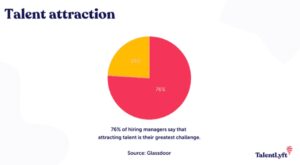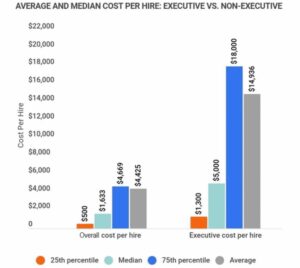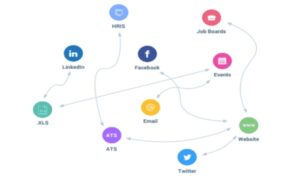Finding and keeping good employees is challenging in today’s competitive environment. Unfortunately, the hospitality industry is in a drought—talent-wise. There’s been a mass exit of workers and rekindling those relationships is difficult. Although there are numerous strategies one can take to attract good employees, the effort needs to be continuous. There needs to be a focus on building an excess of talent, or a talent pool.
Constructing a Pool
A talent pool is essentially a database of candidates who are interested in working for your organization. Your pool should consist of candidates who have already applied for a job at your company. It should also include candidates whom you have sourced, and those that have been referred by others.

Think of your talent pool as a shortlist of who may or may not be seeking a position in your organization. A talent pool can include:
- Candidates already sourced-These are folks who have already been vetted by the company. They may not have already been hired, but are qualified for available positions.
- Leads-These come from traditional talent searches from job fairs, current team members, and online applicants. Leads can also come from current team member referrals.
- Passive candidates-This includes individuals who are currently employed and not actively looking for a new job. However, they may be open to a good career opportunity if one came along. Keeping consistent lines of communication open via social media sites and other outlets helps attract passive candidates.
- Candidates from networking sites-This includes candidate profiles on LinkedIn, Facebook, and social media job sites.
- Unsuccessful candidates-Applicants who didn’t make the cut the first go-around. They may have applied for one position, but are actually more suited to a different role. This is typically an overlooked resource of talent that can be added to the talent pool.

The Importance of a Talent Pool
Having a talent pool does a number of things to help a company keep good employees while reducing recruiting costs. The average cost per hire is about $4,425. But creating a talent pool helps to offset costs by reducing the need to advertise, review resumes, and interview. There is also a savings in time. With a database of qualified candidates, there is no longer a need to search job sites.

Using a recruitment agency is another way to save the costs associated with building a talent pool. The heavy lifting is typically already taken care of with these agencies. All you have to do is make sure you have a clear picture of the type of candidate you want. The recruiting firm will search its database and screen for competent candidates. This is yet another resource for adding folks to your talent pool.
Five Keys to Building a Talent Pool
Having a pool of talent to go to when things get shaky, (as in today!), is a wise business practice. Building a talent pool takes time and patience, but it is well worth the efforts. There are various ways to create your own talent pool.
Here are five key strategies to consider:
- Review organizational strategies-Look at what your organization needs in the way of talent. For example, you may have unexpected turnover with restaurant servers or hotel clerks. Make a note of the priority talent needed first. Then consider the competencies needed in that role and determine what the future talent should possess.
- Build a community-Begin today to jump start your branding presence. A good place to start is on social media sites. If you don’t have one, create a professional LinkedIn account. The goal of this strategy is to get the message out about your business. After setting up the company’s profile, submit helpful articles through your account. Keep the content fresh and useful to readers.

If you have a Facebook and Instagram account, do the same on those sites
Every so often, let your followers know that you are looking for qualified candidates. Keep in touch with these folks and add them to your database of talent. Producing fresh content and regularly updating your website lets visitors know what future openings you may have. This is a great way to attract passive candidates.
- Add sourced candidates-Whenever you come across interesting people who don’t fit any of your current open roles, just add them to your talent pool. The challenge with this segment of your pool is staying in contact with them. If you want to keep people interested, you need to regularly engage with them. A good way to do this is to send Thank You or other cards through regular mail. A simple note like, “Just wanted to let you know we haven’t forgot about you.” Inform them that you enjoyed meeting them and that you will let them know when a position becomes available.
- Use referrals-Once you find a good candidate, ask them for referrals. Let them know that you appreciate their skillset and that you would like to find others just like them. If they give referrals, be sure to follow up on them and add that candidate to your pool immediately. As with passive and sourced candidates, you will need to stay in contact with those referred. If you don’t hire a referred candidate right away, you will need to keep your company fresh in their minds.
- Re-engage unsuccessful candidates-Touching base with candidates who applied before but didn’t make the cut is another way of filling your talent pool. Stay in touch with these folks as well because they may feel that your company is history to them. Update their contact information and send them notes, emails and texts about your company. This strategy is often appreciated and helps the candidates remember the organization.
Perfecting Your Pool of People
Building your talent pool takes time and requires consistent effort in communicating your brand. But the benefits of having a talent pool are enormous. Having a talent pool takes a lot of the guesswork out of recruiting. It allows you to fill currently open and future roles with people you already know. All of this helps you to begin forecasting future recruiting and headcount requirements more accurately.
To make the talent pool successful, you’ll need to personalize the content you share with the candidates in your pool. You’ll want to keep in mind that students want different information than former employees or people on parental leave. If you want to start building and managing a talent pool, become a chameleon, changing colors as needed. Customize your communication efforts to better attract, and retain, qualified candidates in your pool. You’ll soon reap the harvest of a pool of talent that keeps your business functioning smoothly.





